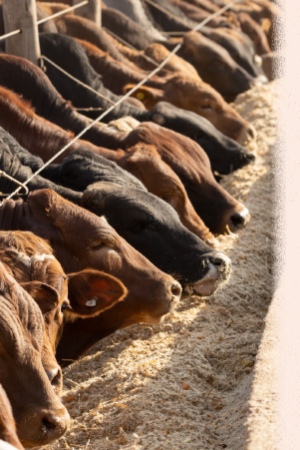


Sign-up for {N}power to get exclusive discounts, newsletters, members-only features, and more!

If we viewed our food choices as power, would it change the food that fills our plates? If we made it our business to understand the policies that shape our food system, would we demand something different?
It's grilling season, a time to share delicious food, laughter, music, and moments with friends… summertime bliss at its finest. It's also the year interested parties will gather in Washington, D.C., to influence the next Farm Bill.1 And this legislation, enacted roughly every five years, has a far-reaching impact on the economic, health, and environmental outcomes of our food supply.2 3 4
 One industry group that agricultural policy has disproportionately benefited for decades now is meatpackers and processors.5 6 Today, just four companies dominate approximately 55-85 percent of the poultry, pork, and beef markets. By comparison, in the 1970s and 80s, the biggest firms in each category controlled only 25-35 percent of these markets.7 The prevailing production model for the meat they process is CAFOs (concentrated animal feeding operations), where thousands of animals are raised in landless confinement.8 The largest operations control the greatest market share. For example, feedlots with 1,000 cattle or more make up less than five percent of beef cattle operations but supply 80 to 85 percent of beef to the market.9
One industry group that agricultural policy has disproportionately benefited for decades now is meatpackers and processors.5 6 Today, just four companies dominate approximately 55-85 percent of the poultry, pork, and beef markets. By comparison, in the 1970s and 80s, the biggest firms in each category controlled only 25-35 percent of these markets.7 The prevailing production model for the meat they process is CAFOs (concentrated animal feeding operations), where thousands of animals are raised in landless confinement.8 The largest operations control the greatest market share. For example, feedlots with 1,000 cattle or more make up less than five percent of beef cattle operations but supply 80 to 85 percent of beef to the market.9
And the demand for CAFO feed heavily influences what farmers grow each year—corn and soybeans prevail, taking up more than half of U.S. cropland acres in 2020, and an estimated 40 percent of corn and 70 percent of soybeans are destined for livestock feed.10 11 12 More than 90 percent of both crops are grown from genetically modified, herbicide-resistant seeds, and farmers use a staggering amount of synthetic pesticides to produce them.13 Almost one-quarter billion pounds were attributed to feed crops in 2018 (the last year full data was available), including 100 million pounds of glyphosate, 25 million pounds of atrazine, and 11 million pounds of dicamba, according to a 2022 report co-authored by the Center for Biological Diversity. These chemicals pose a range of risks to endangered and protected species, both plant and animal.14 Meanwhile, partly due to unsustainable farming practices, U.S. croplands reportedly lose twice as much soil to erosion yearly as the Great Plains did during the height of the Dust Bowl.15
Government subsidies and crop insurance programs incentivize this dismal status quo. The farmer-led advocacy group, Farm Action, reports that on average, 44 percent of U.S. farmer income comes from government subsidies and bailouts.16 17 Some experts point to the 1996 Farm Bill as a "disastrous" shift in this direction. It ended commodity grain supply management, ushering in flooded markets, with crop prices routinely lower than production costs.18 19 Consequently, Congress issued emergency payments to farmers, which they made permanent in the 2002 Farm Bill because the prices for commodity crops never recovered.20
The 2014 legislation saw another significant shift that benefited banks, insurance companies, and meat processors more than farmers. It reduced funding for direct payments to farmers while increasing disaster assistance for livestock producers, and subsidized farmer loans and the crop insurance program.21 With taxpayer dollars insuring corn and soybeans, banks are more likely to loan to farmers growing those crops,22 and throughout it all, the meat processing monopolies continue to enjoy a guaranteed supply of cheap feed.23
“Choice: the right, power, or opportunity to choose”
–The dictionary
An American Farm Bureau poll says that most Americans support the Farm Bill, but more than 70 percent of respondents also know little about it.24 Is this grilling season the time to pay attention to the silent monopolization of our food system? Time to use the power of our choices to help pivot its trajectory? A burger can be delicious and powerful—if you choose it.



Sign-up for {N}power to get exclusive discounts, newsletters, members-only features, and more!